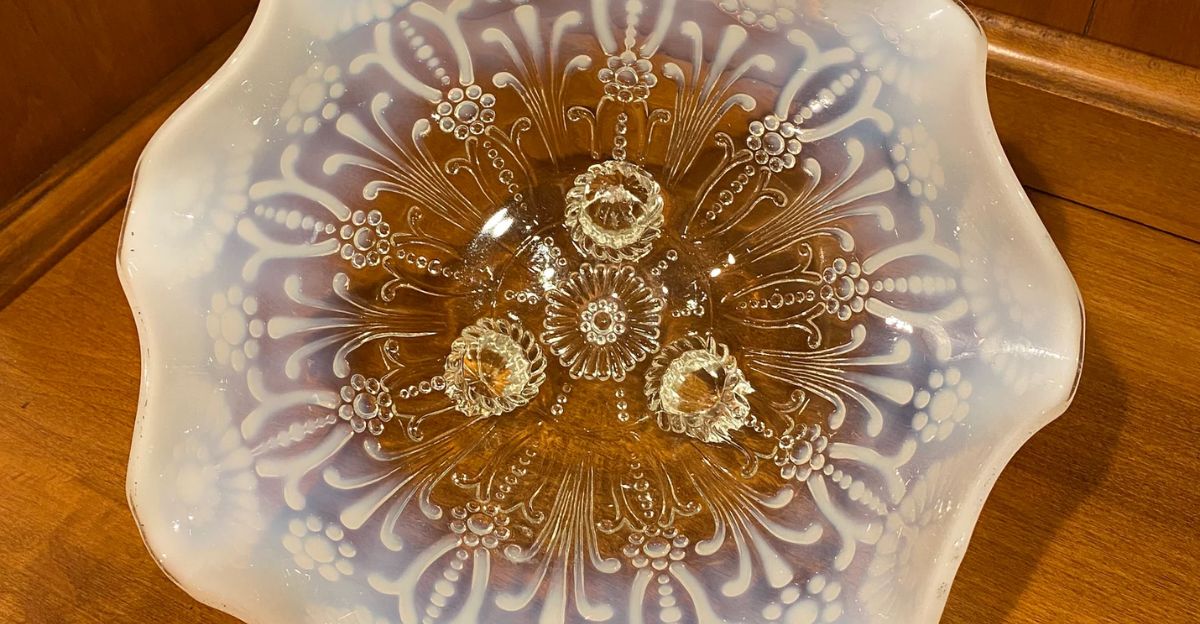
During the Great Depression in the early 1930s, manufacturers produced a huge amount of bright-colored glassware, which was later dubbed “Depression glass.” These items were often given away with groceries or in cereal boxes as promotional giveaways. However, what started as a marketing tool to boost sales has become a sought-after collectible.
But what changed? Limited availability due to breakage, rare colors, and nostalgic demand has turned some Depression glass items into prized collectibles. Strangely, it’s not always the oldest or most elaborate pieces that are the most sought-after; it’s the oddball colors or quirky patterns that drive up prices. These are nine Depression glass pieces that are worth a ton today. Do you have any of these sitting around?
1. Uranium Glass
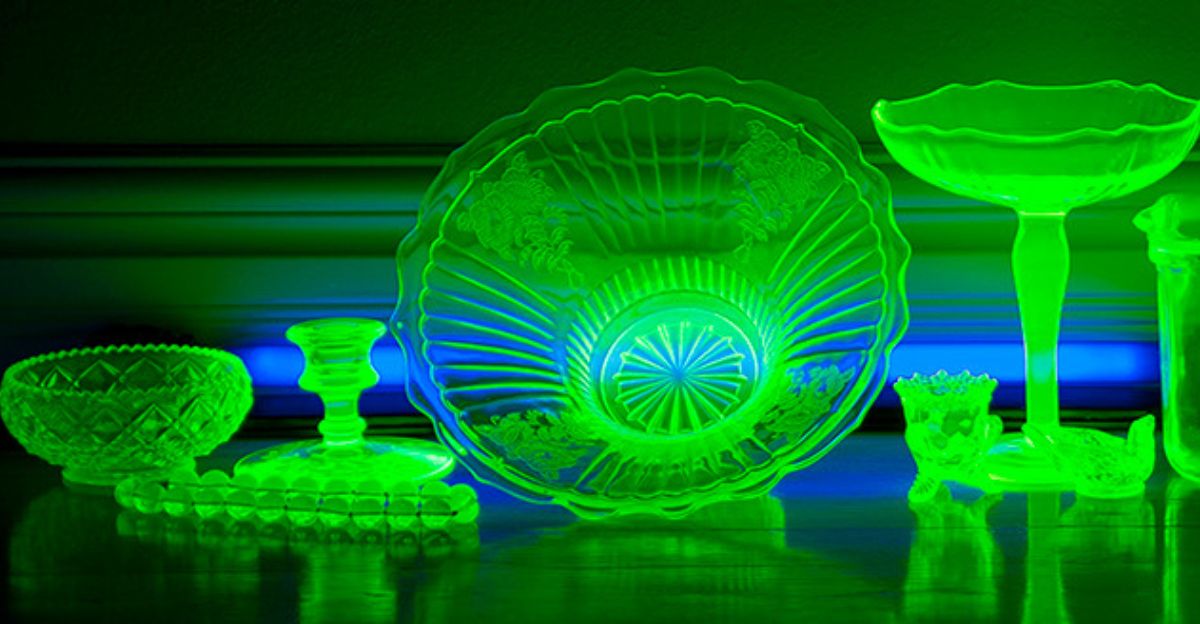
Uranium glass is worth a pretty penny today! It is often called “vaseline glass” because of its slick, yellow-green sheen and contains small amounts of uranium oxide, making it glow under UV light. Uranium glass started as a quirky addition to kitchenware, but has since become a favorite among collectors and science buffs.
This glass is technically radioactive, but the levels are so low that they pose no significant health risks. Some items, like rare pitchers or butter dishes, have been sold for up to $7,400 in recent years.
2. Fire-King Turquoise

Anchor Hocking’s Fire-King Turquoise was produced in the post-Depression era and bridges Depression-era mass production and the sleek style of the 1950s. It is easily recognized by its vivid blue hue and modern shape, which Depression glass collectors and fans of midcentury modern design adore.
Today, you can sell a complete set of this glassware for up to $3,500, especially since turquoise is such a trendy color in modern kitchens. Fire-King Turquoise glassware shows that a piece’s value isn’t determined by its age or scarcity alone, but also by how seamlessly it slots into modern design trends.
3. Hazel Atlas Blue Royal Lace
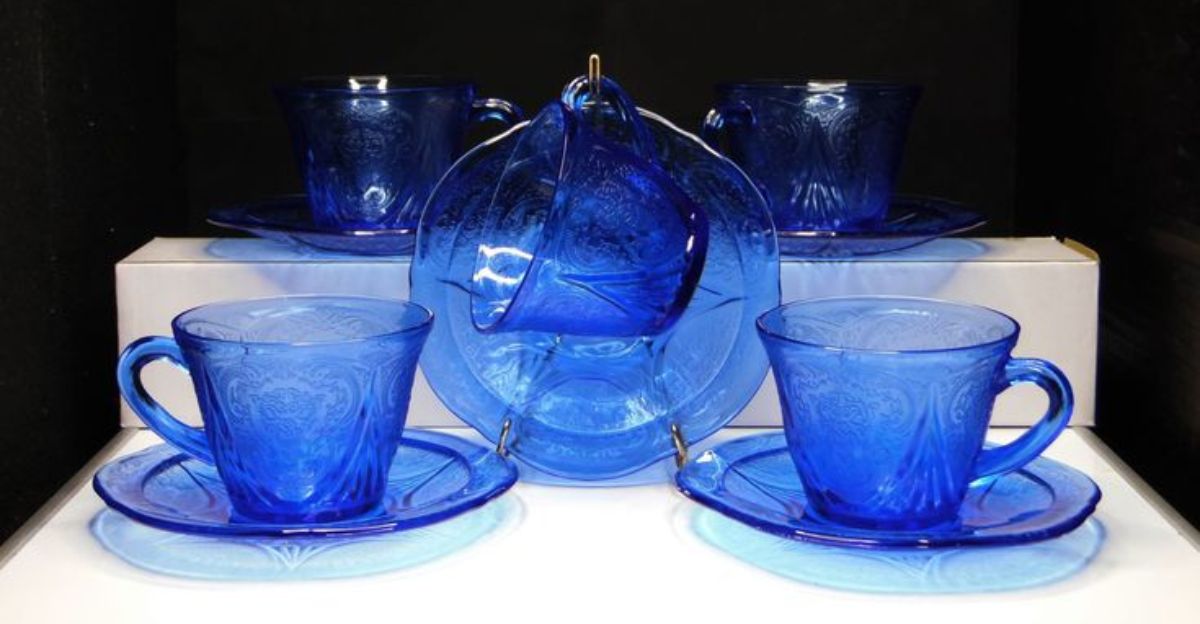
Made between 1934 and 1941, Hazel Atlas’s Blue Royal Lace pattern is a favorite among collectors because of its elaborate lace-like motif and deep cobalt blue color. Individual pieces of this stunning glassware can sell for as much as $750, while specialty items, like butter dishes, are worth even more.
Its stunning color and detailed design prove that even the most colorful and striking glassware can be valuable. Collectors prize Blue Royal Lace for its bold look and will pay a lot of money to get their hands on it.
4. Jeanette Jadeite
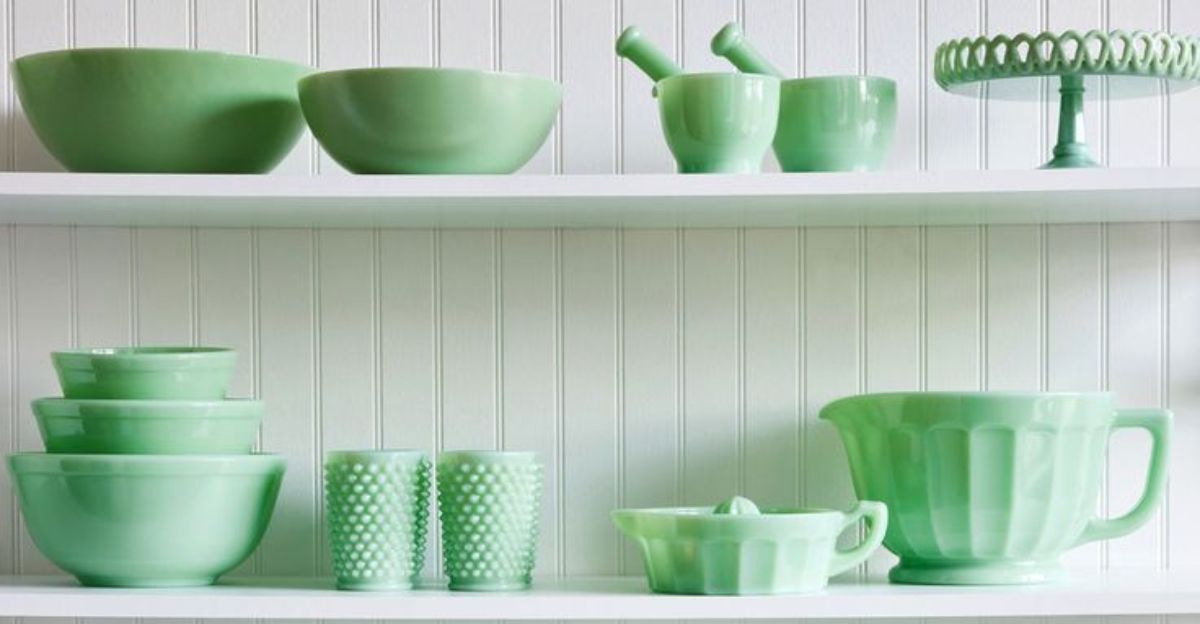
Jeanette’s Jadeite glass is another favorite because of its milky green, opaque finish. This glassware truly stands out from other Depression glass. It was produced during the 1930s and 1940s, and is worth a lot of money today. Rare items, like canisters and mixing bowls, often sell for up to $850.
Over the years, Jeanette’s Jadeite glass has become increasingly popular thanks to celebrity chefs and Instagram food stylists, showing how modern trends and nostalgia can dramatically boost the market value of vintage kitchenware.
5. Cherry Blossom by Jeanette
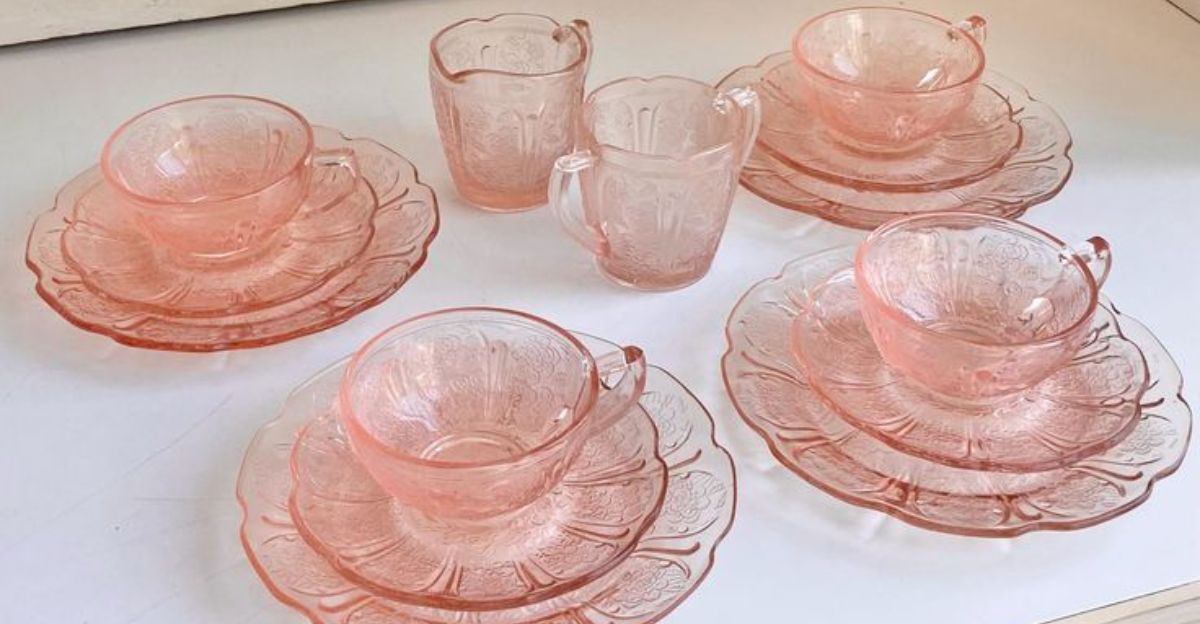
Jeanette’s Cherry Blossom line, which was manufactured between 1930 and 1939, is famous for its stunning soft pink color and delicate floral design, which has made it a favorite among collectors. What started as an everyday glassware has become a highly sought-after collectible, with a complete set now costing up to $6,479, especially in pristine condition.
This line is often associated with femininity and vintage bridal themes, which has made it a favorite for themed weddings and retro collectors, showing how changing cultural values and aesthetics can increase the value of Depression glass.
6. MacBeth-Evans American Sweetheart
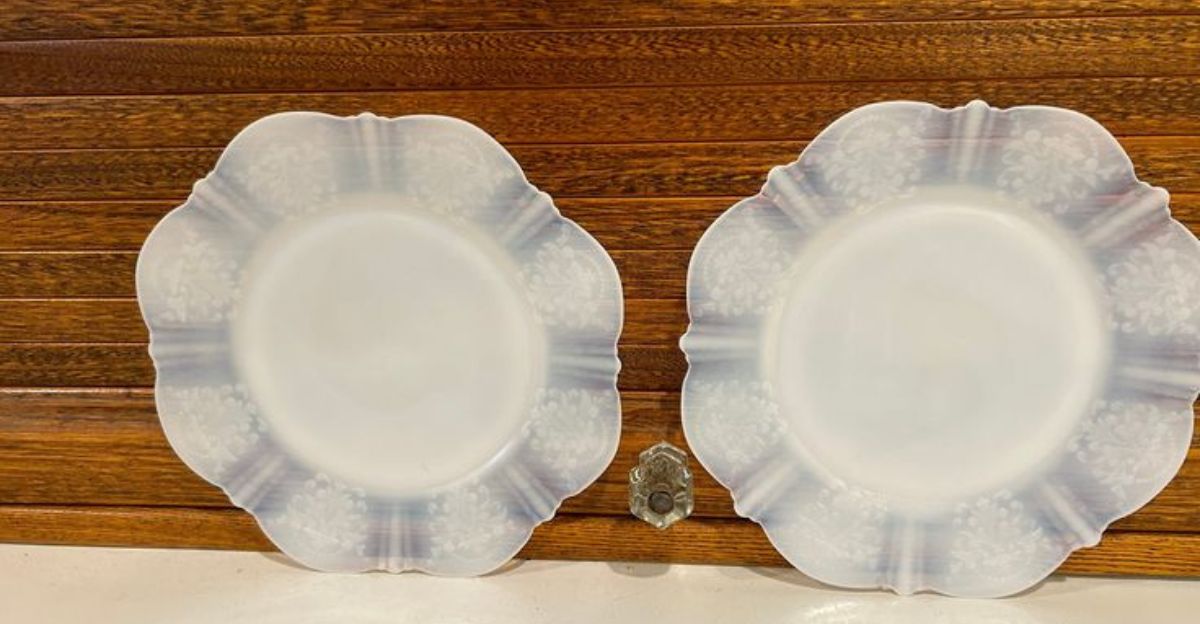
American Sweetheart was produced by MacBeth-Evans from 1930 to 1936. It is celebrated for its shimmering Monax color and delicate scrollwork. Although its color is more subtle than that of other Depression-era glass, rare shades and the glass’s ethereal quality make certain pieces worth almost $600.
This glassware is a favorite because of its unique translucence and optimistic design. It is proof that sometimes a simpler look, with its subtlety and craftsmanship, can be just as valuable as bolder, flashier pieces.
7. Mayfair Open Rose
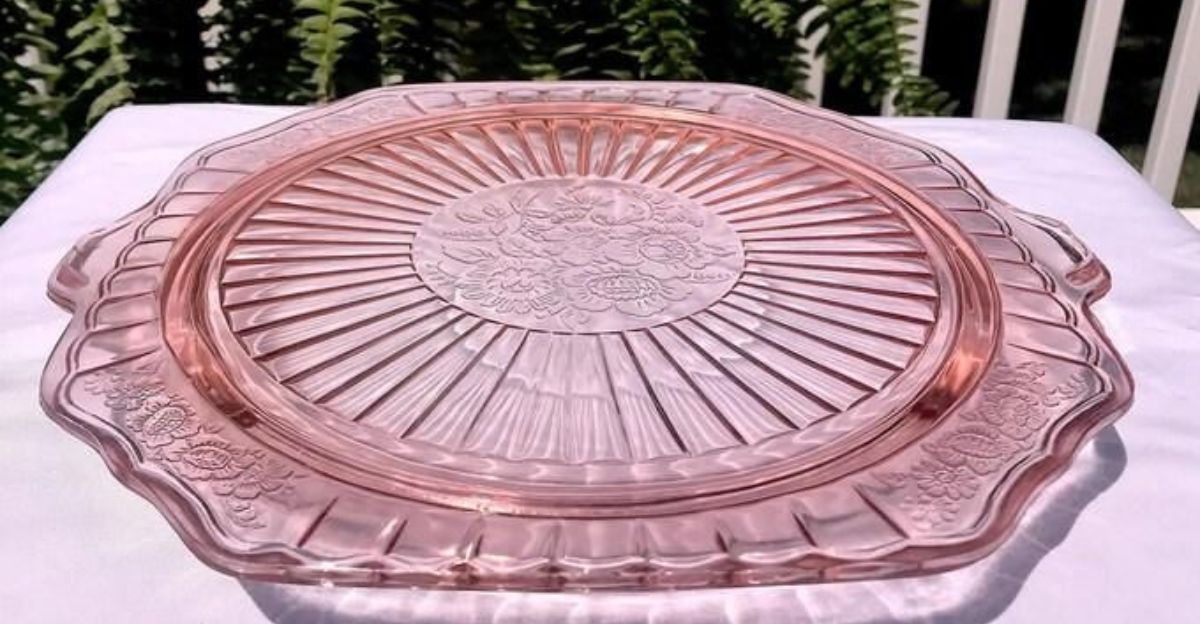
The Hocking Glass Company produced its Mayfair Open Rose collection from 1931 to 1937, featuring raised rose motifs pressed into the glass during manufacturing. This technique is referred to as mold-etching. These items were mass-produced, but today, certain items like tumblers and candy dishes are worth up to $1,500.
The popularity of this pattern and the difficulty of finding undamaged pieces show that mass-produced products aren’t always low-value. Mayfair Open Rose proves that desirability and scarcity, even for once-common items, can be surprisingly valuable.
8. Doric and Pansy by Jeannette
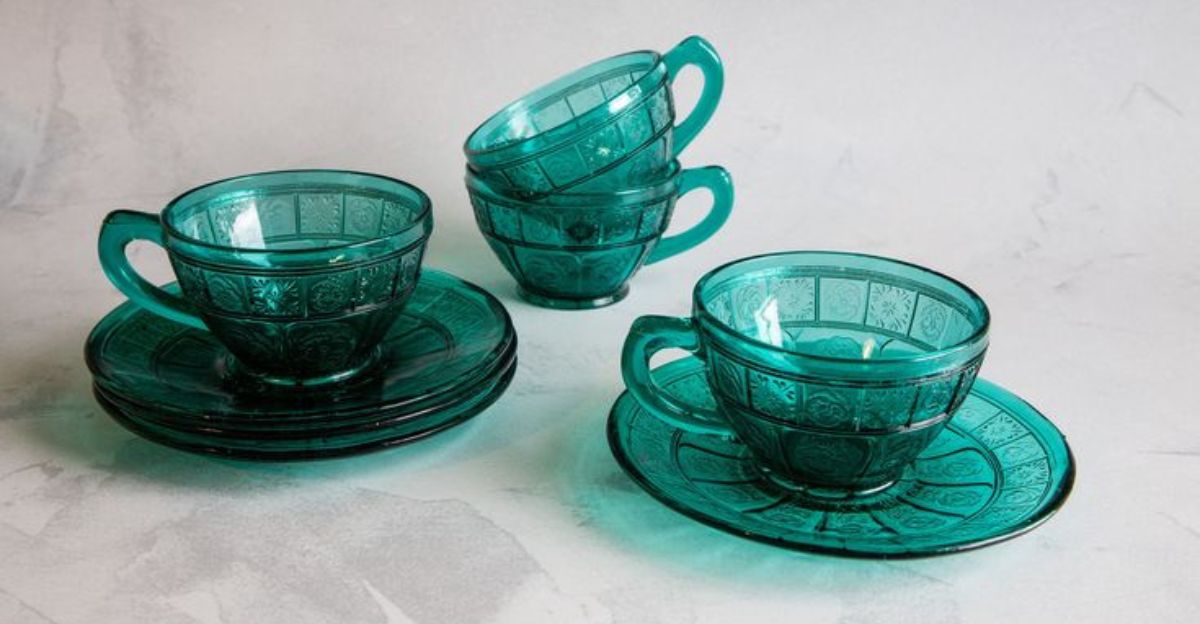
The Doric and Pansy by Jeannette was only produced from 1937 to 1938 and is one of the rarest Depression glass lines. It is easily recognized by its ultramarine blue color and is known for its brief production run, which has made it highly sought after. Butter dishes and trays can sell for $400 or more.
This line shows how fleeting trends and short manufacturing windows can create lasting value, even for mass-produced items that were once considered disposable. Collectors now hunt for these rare pieces, driving prices ever higher.
9. Adam Pink by Jeannette
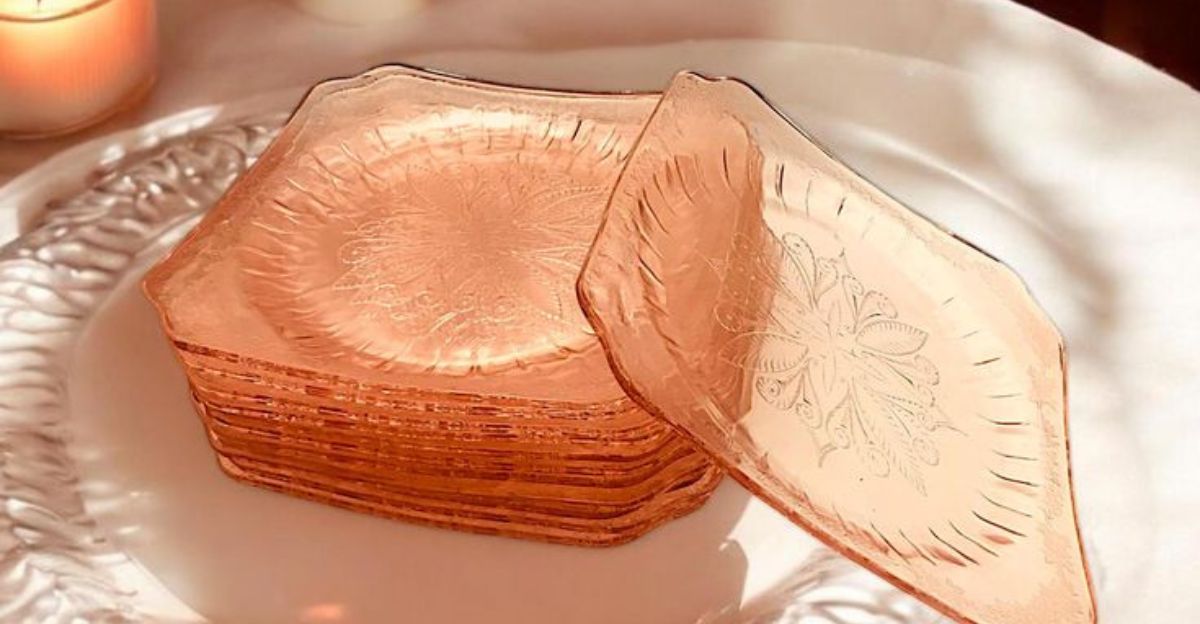
Lastly, Adam Pink by Jeannette was produced between 1932 and 1934, and is a favorite because of its geometric Art Deco design and soft pink hue. Cake stands and serving bowls are worth quite a lot, and can be sold for $350 or more, especially if they have not been damaged.
The Adam pattern combines the practical style of the Depression era with creative design, showing that mass-produced, everyday items can become surprisingly valuable. This item’s lasting popularity challenges the idea that only ornate or hand-crafted antiques are truly valuable.
